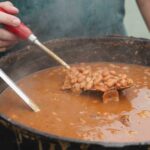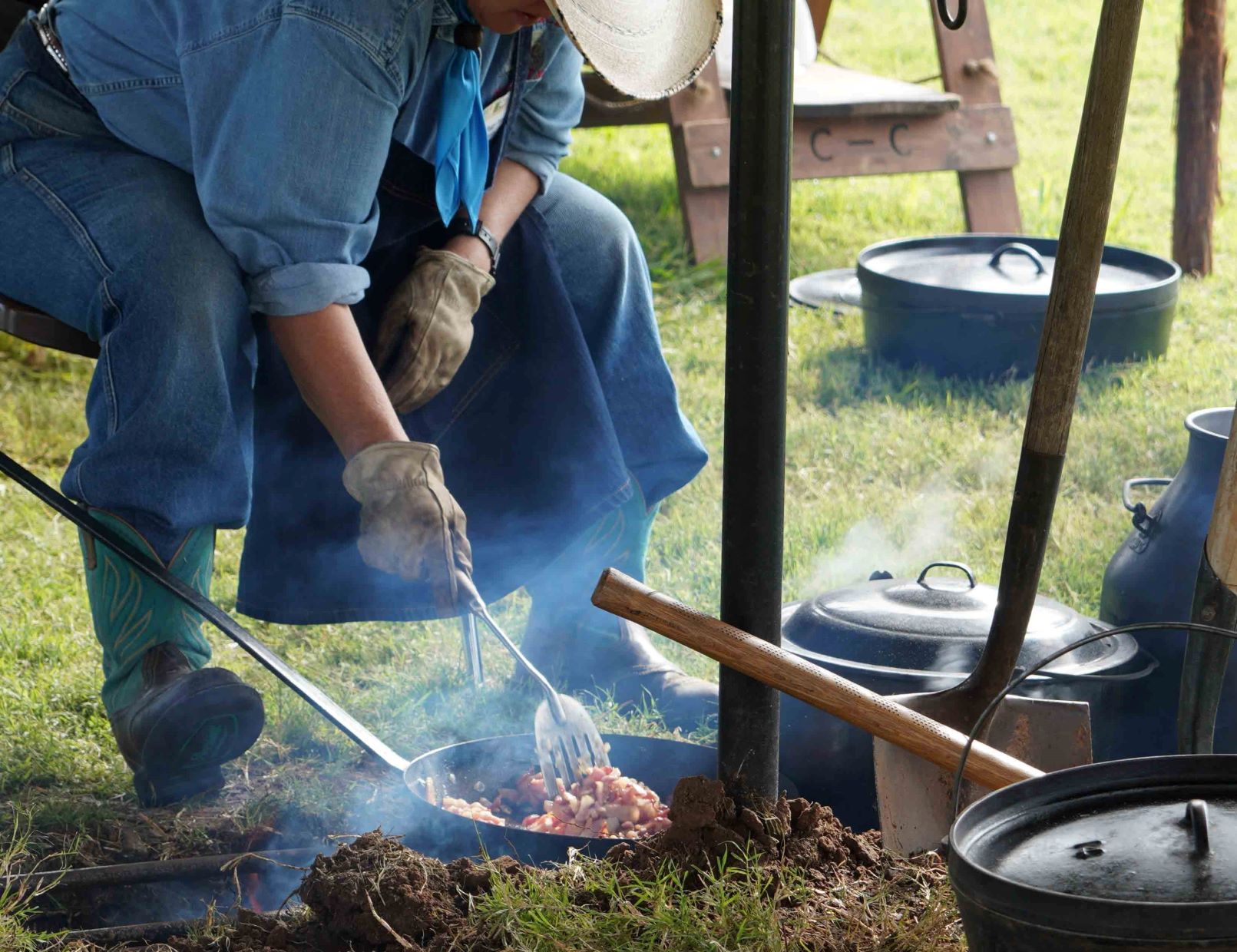
RECIPES - LIVING HISTORY & HOME COOKING
For the LIVING HISTORY COMMUNITY and COOKS AT HOME, here are one page versions of our recipe cards. Enjoy! NOTE: Scroll down for our list of ARTICLES...
Vintage-style Living History Recipe – Taco Al Carbon
Vintage-style Living History Recipe – Heirloom Chili
Vintage-style Living History Recipe – Chicken Stew
Vintage-style Living History Recipe – CT Cowboy Steak
Vintage-style Living History Recipe – Beef Stew

ARTICLES & TIPS
Scroll down for additional entries.
Heirloom Seasonings – How they came to be
When I teach about foods of the old West and 19th century foods, I prepare examples of dishes that are based on vintage recipes and seasonings.
After these events, I would receive many requests for samples of the period seasonings and spices, so that folks can use them in the period meals that they would like to cook. I launched a selection of 19th century seasonings, so that living history cooks, as well as regular folks, can duplicate ‘old time recipes’ at home.
In working with food historians, coupled with my experience as a chef and avid living historian, so was born our line of heirloom seasonings.
Tips for Applying a Proper Dry Rub
To get the most out of a dry rub, here are a few simple hints that will provide you with the best results. Before cooking or grilling steaks, chops, or burgers, season your cut of meat at least two hours before grilling. This will allow time for the seasoning to meld with meat. When grilling chicken, try to work your seasoning under the skin as well as on top. This will add to the richness of the flavor.
When smoking larger cuts of meat, make light cuts on the fat side of the brisket, ham, pork loin, or roast. Apply your rub at least 12 to 24 hours before cooking. This will allow the meat time to draw in the flavors of the seasoning. When you are cooking chicken or game birds, rub some seasoning under the skin, as well as the outside of the bird. You can also dust the inside of the bird with some additional seasoning.
When slow smoking meats, apply a thicker coating of your rub and use the low-and-slow method of smoking. Seasonings, along with the smoke, will produce the desired crust and smoke ring onto the meat.
It is recommended that you apply one (1) tablespoon of seasoning per pound of meat for an even coating.
Recipes and New Flavors
We are creating a newsletter that you can subscribe to for vintage recipes, as well as modern variations, for using our products. We are adding (very soon) new products to our catalog for a greater opportunity to try our unique line of Texas products.
We will soon be premiering our line of custom dipping spices, olive oils, olives and honeys. All Texas grown and produced products from small Texas companies that you won’t be able to find in stores. Watch for our new product additions this spring.
Making a Simple Wet Paste with your Seasonings
A damp or wet paste is a wonderful method when cooking or roasting meats. The ideal portions are for every tablespoon of seasoning, add one (1) Tablespoon of oil or melted butter. How thick you want the paste is up to you. Apply your paste by hand, working it into the meat for best results. When roasting a chicken or other fowl, work some of your seasoning paste under the skin and into the body cavity for a full flavor experience.
Apply your wet paste several hours before roasting or cooking for best results.
Spicy Chicken Fried Steak or Chicken Fried Chicken
Our spicy fried chicken seasoning is a wonderful taste sensation for preparing a batch of fresh hot spicy fried chicken. You can take it further by creating a spicy version of a Texas favorite, chicken fried steak or spicy chicken fried chicken.
Prepare your steak or chicken as you would normally. Add some hot sauce to the milk soak, cover, and let it marinade for about four (4) hours in your fridge.
Add several tablespoons of our spicy fried chicken seasoning to several cups of flour then dredge your steak and deep fry the meat until golden brown. Place on a rack to drain and lightly sprinkle with a dusting of our spicy fried chicken seasoning. Guaranteed to spice up a meal on any cold day!
Go Texas – Going Texan
The Lone Star State is known for its diversity of foods and flavors. There is not a cooking show or food show that does not showcase examples of everything from Tacos to Bar-B-Que. Texas has to offer a wide and diverse list of homegrown products that we will be adding to our catalog, this year.
The majority of our products are produced by small independent companies and businesses. Many have limited production runs, so when they are gone, that’s it. We fully support the small Texas businesses. Our producers are Texans and we travel the state to find just the right products. Soon, all of our products will bear the stamp “GO TEXAN,” approved by the Texas Commerce Commission and a visible symbol of our products being produced here in the Lone Star State. It is our commitment to the quality of the products we sell.
